There are several enjoyable things to do when spending a day at the beach. Collecting seashells is a fun and easy activity people of all ages can do and enjoy.
If you’re planning on spending some time collecting seashells on the beaches in North Carolina, take a look at some of the most common seashells you’ll find on our shores and when the best time to collect them is.
When to Collect Seashells
You can find seashells on North Carolina beaches all year round and any time of the day. That being said, there are certain times where you’ll have a little more luck finding beautiful seashells.
The best time to collect seashells is early in the morning or in the evening. Another time to explore the beaches is right before and after low tide.
Common Seashells on North Carolina Beaches
Now that you’re ready to hit the beaches, here’s a guide so you can learn what kind of seashells you’re likely to find.
Scotch Bonnet
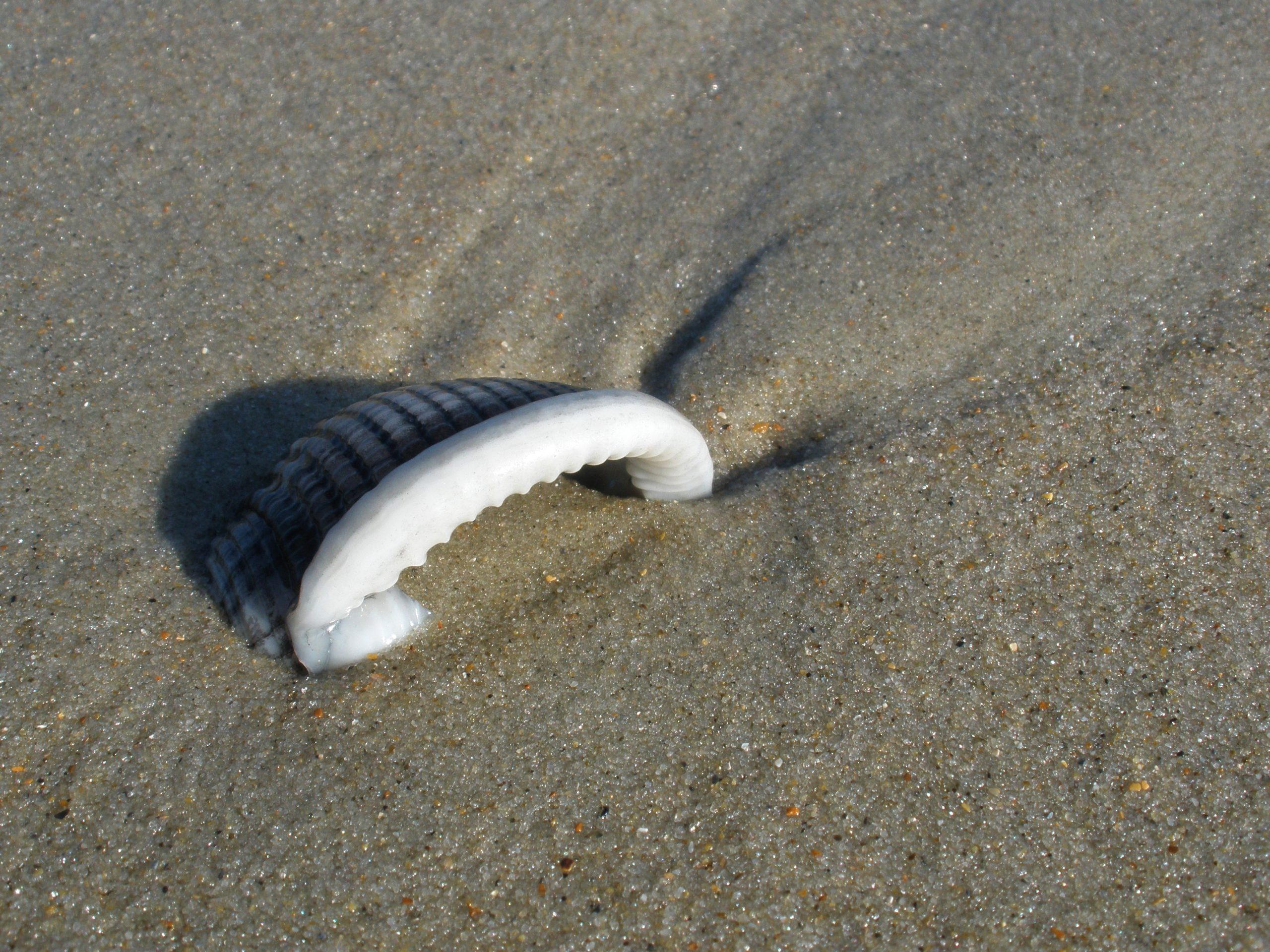
If you come across a white shell with brown or yellowish squares in rows, you’ve probably found a Scotch Bonnet. These squares will also be in spirals around the seashell. These are fairly small seashells ranging in size from one and a half inches to four.
Keyhole Sand Dollar
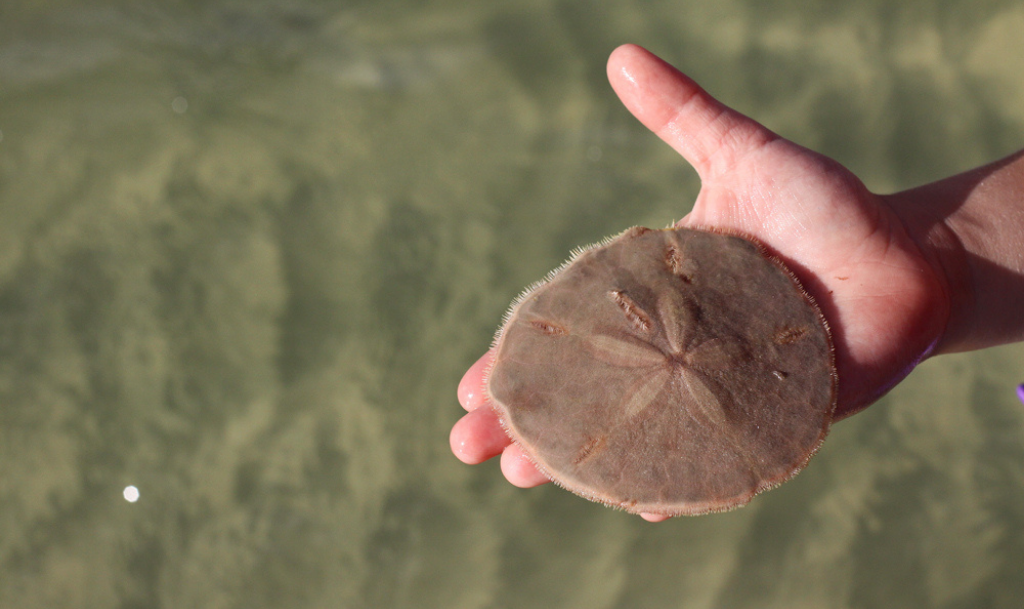
Many people dream of finding sand dollars at the beach. You’ll know you’ve found a Keyhole Sand Dollar when this sea urchin has five slots that look like keyholes. These shells can range in size from five to six inches.
Soft Shelled Clam
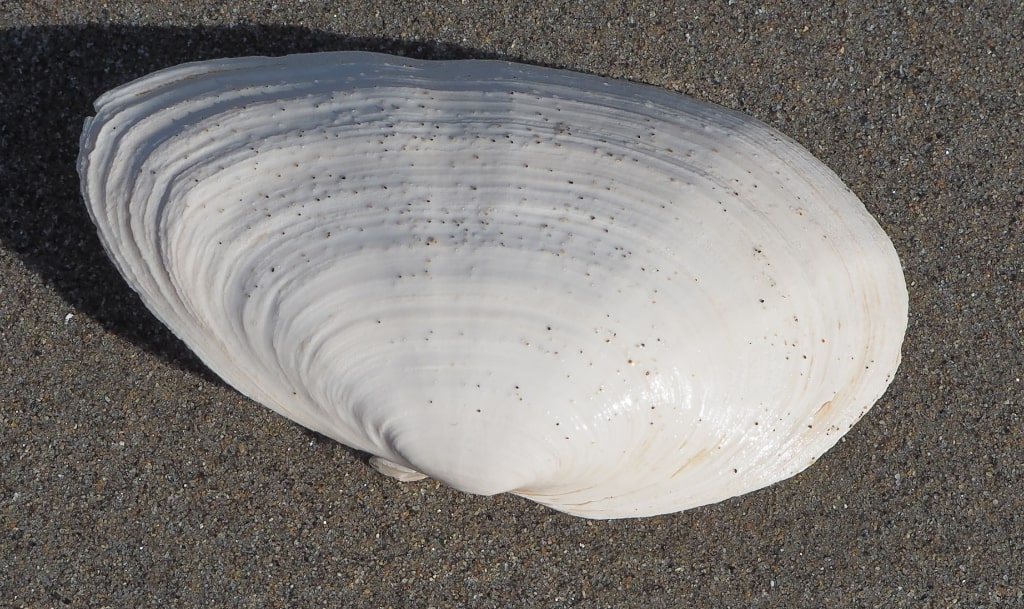
If you’re searching for a Soft Shelled Clam, you most likely won’t find one on the surface of the sand. These clams are found between six and ten inches under the mud. Their color is typically brown, white, gold, cream, or gray and their shell is very breakable.
Banded Tulip

A Banded Tulip has a pearly gray color that has brown or olive spots randomly around the shell. Some will have bands that run from edge to edge.
Lightning Whelk
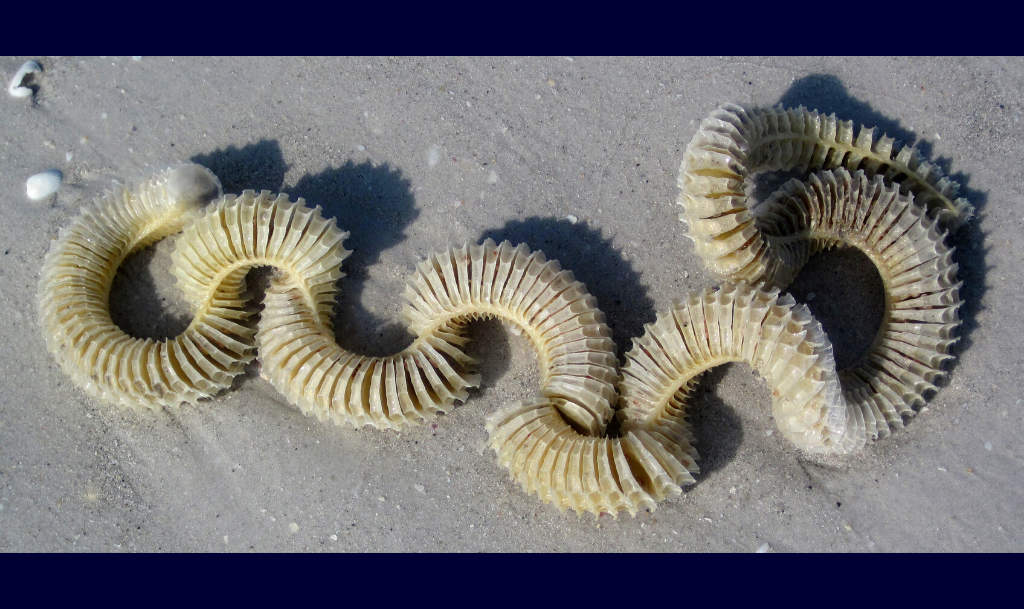
The fastest way to identify a Lightning Whelk is by its shape. This shell has a left-hand spiral. The majority you’ll find are rather small, but these shells can be anywhere from four to 16 inches.
Lettered Olive
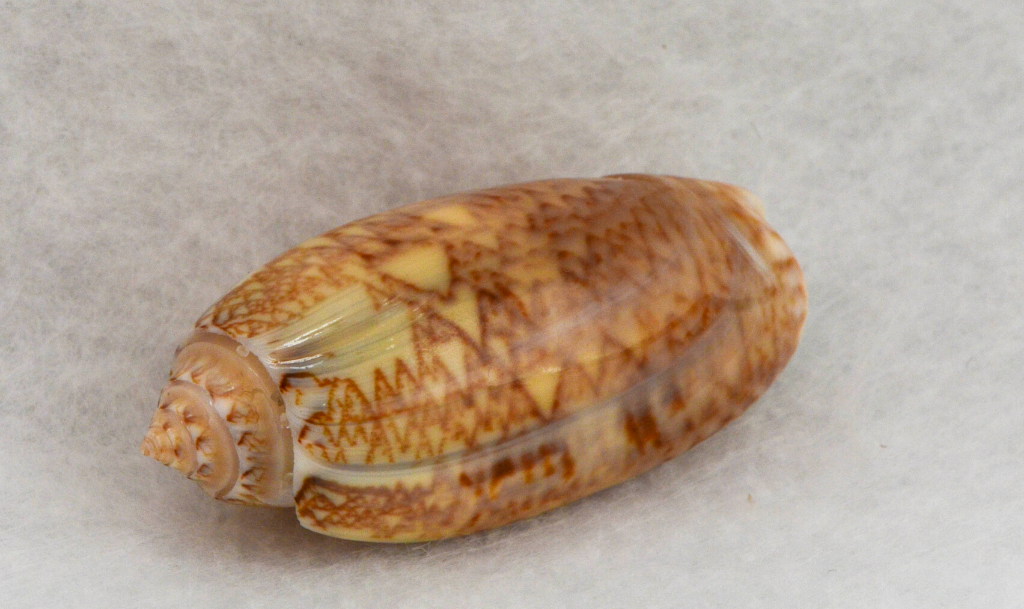
A Lettered Olive has a shiny and smooth shell. It has a cylinder shape with a short spire. Most of these shells have a grey or red color with zig-zag marks running on them. They’re very small at a maximum of two and a half inches long.
Auger Shell

You may know an Auger Shell as an Auger Snail. This shell has a very high spiral with whirls. The name Auger comes from the similarities to a drill bit.
Coquina Clam

A Coquina Clam has a very smooth shell, and it’s usually dull. However, while the color may be dull, it does range from shades of orangish-brown, pink, or purple with white or cream stripes around it.
Atlantic Jackknife Clam
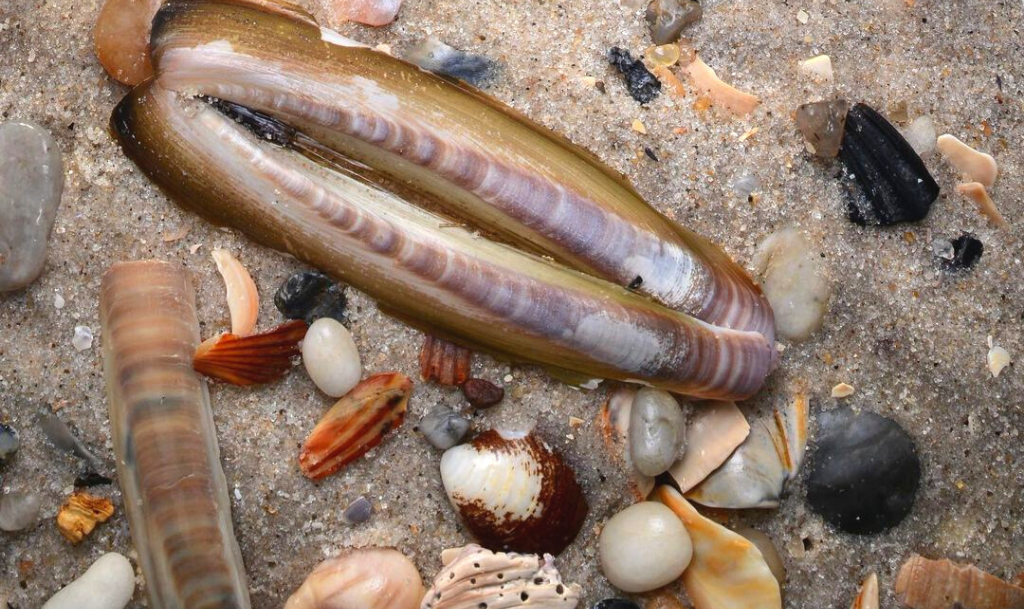
Atlantic Jackknife Clams are a silver or gray color that looks like a straight razor. You may know these clams as Razor Clams. The rim of their shell is very sharp, so be careful if handling them.
Atlantic Bay Scallop
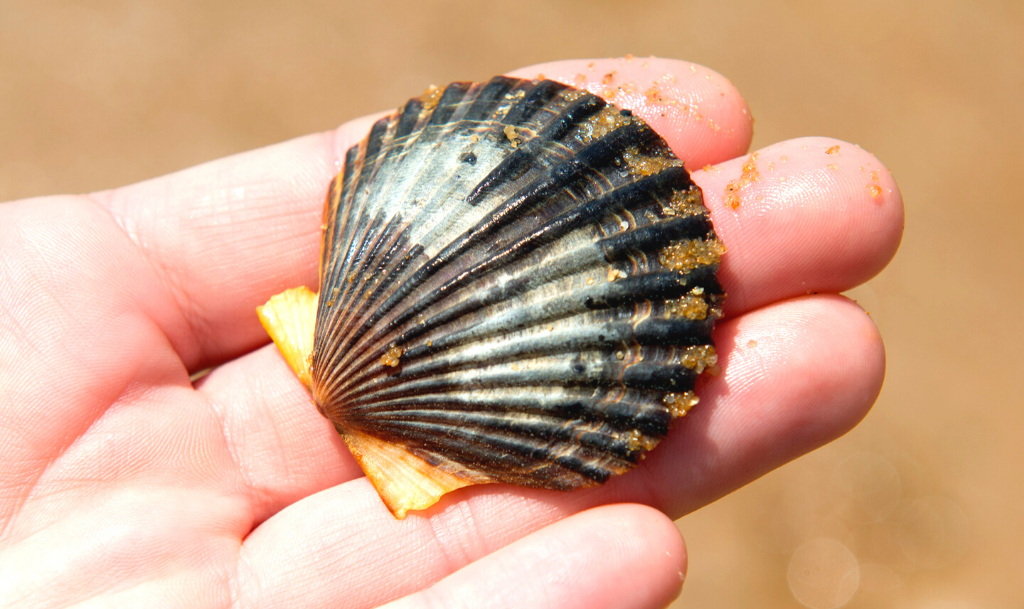
The Atlantic Bay Scallop is a fan seashell that has at least 14 ribs. These shells have a pattern that showcases colors such as grey, brown or black, and red, orange, or yellow hues.
Calico Scallop
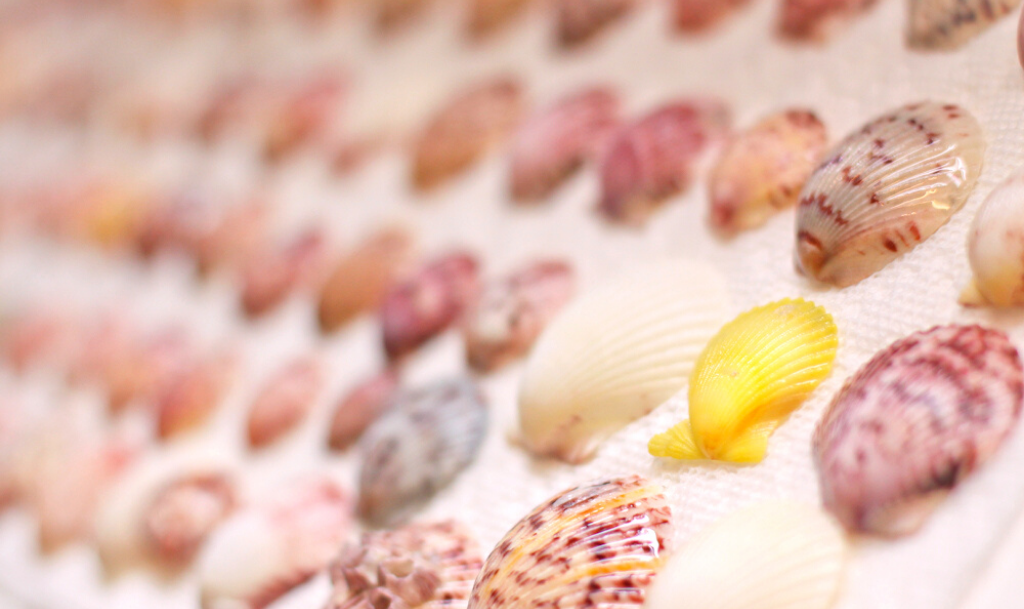
You may mix up a Calico Scallop and an Atlantic Bay Scallop at first glance. These two scallops are very similar in shape. However, with a Calico Scallop, the stripes are more noticeable, and you’ll see red, orange, pink, and brown hues.
Periwinkles
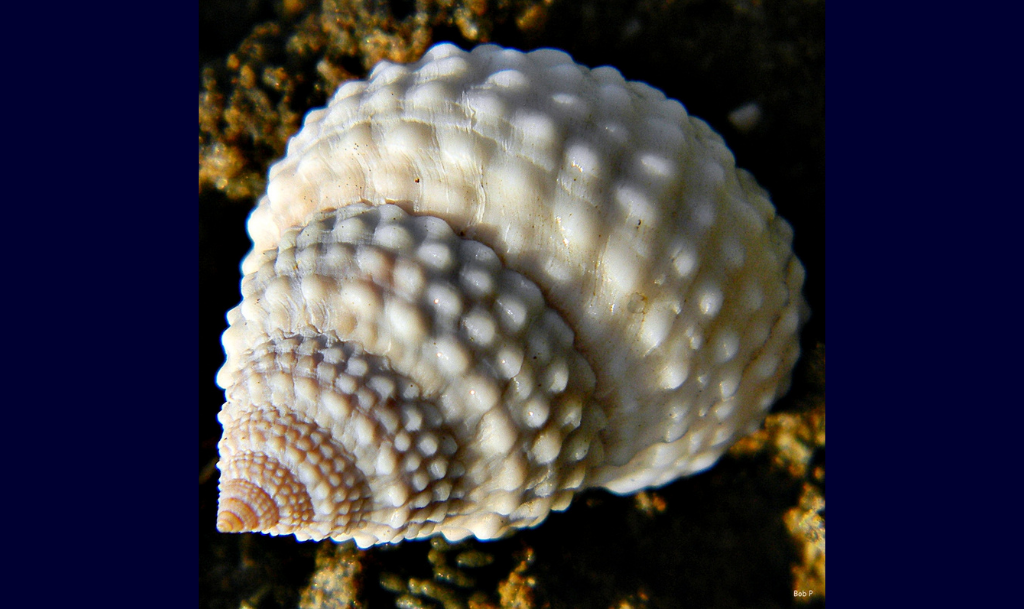
Ornate spiral shells that wash on the North Carolina shore are known as Periwinkles. You can usually find these hiding in piles of other shells. Periwinkles are very small with a maximum length of two inches. They’re known to be delicate and have intricate shapes.
Saw Tooth Pen Shell

This ridged shell can be found year-round, but most commonly after a storm. These shells are deep brown and can be up to 10 inches long. Be careful when handling these shells, as they’re incredibly fragile and break easily.
Atlantic Oyster Drillers
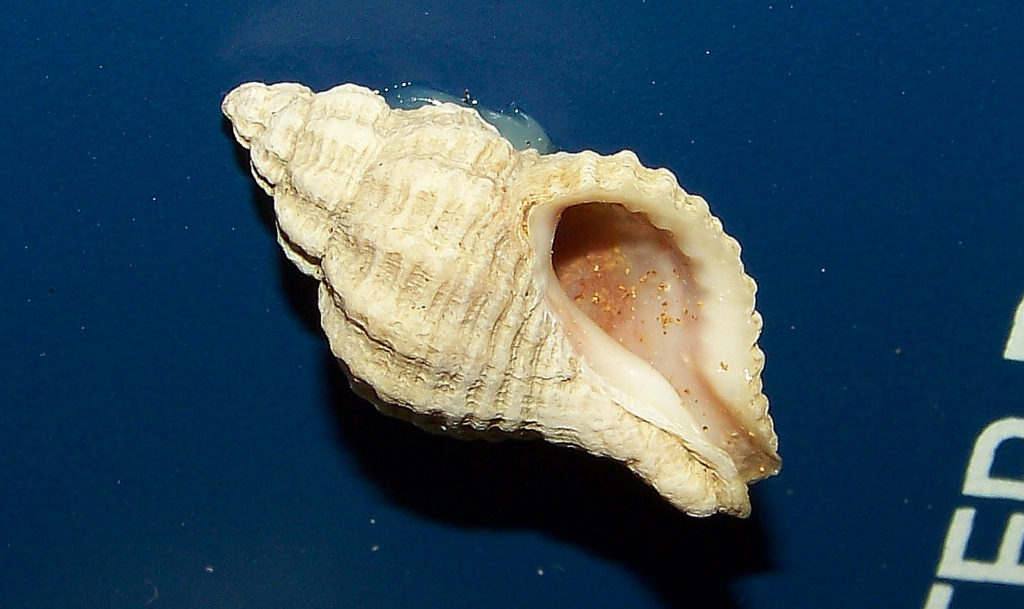
Atlantic Oyster Drillers are snails that have a ribbed and pointed shell. You can find these oysters living on rocks and reefs. They’re very small oysters, growing to only about one inch in length. Atlantic Oyster Drillers shells have raised whorls, spiraling ribs, and a flared lip with small teeth.
Conclusion
North Carolina’s beaches are not only beautiful but have a surplus of unique seashells.
